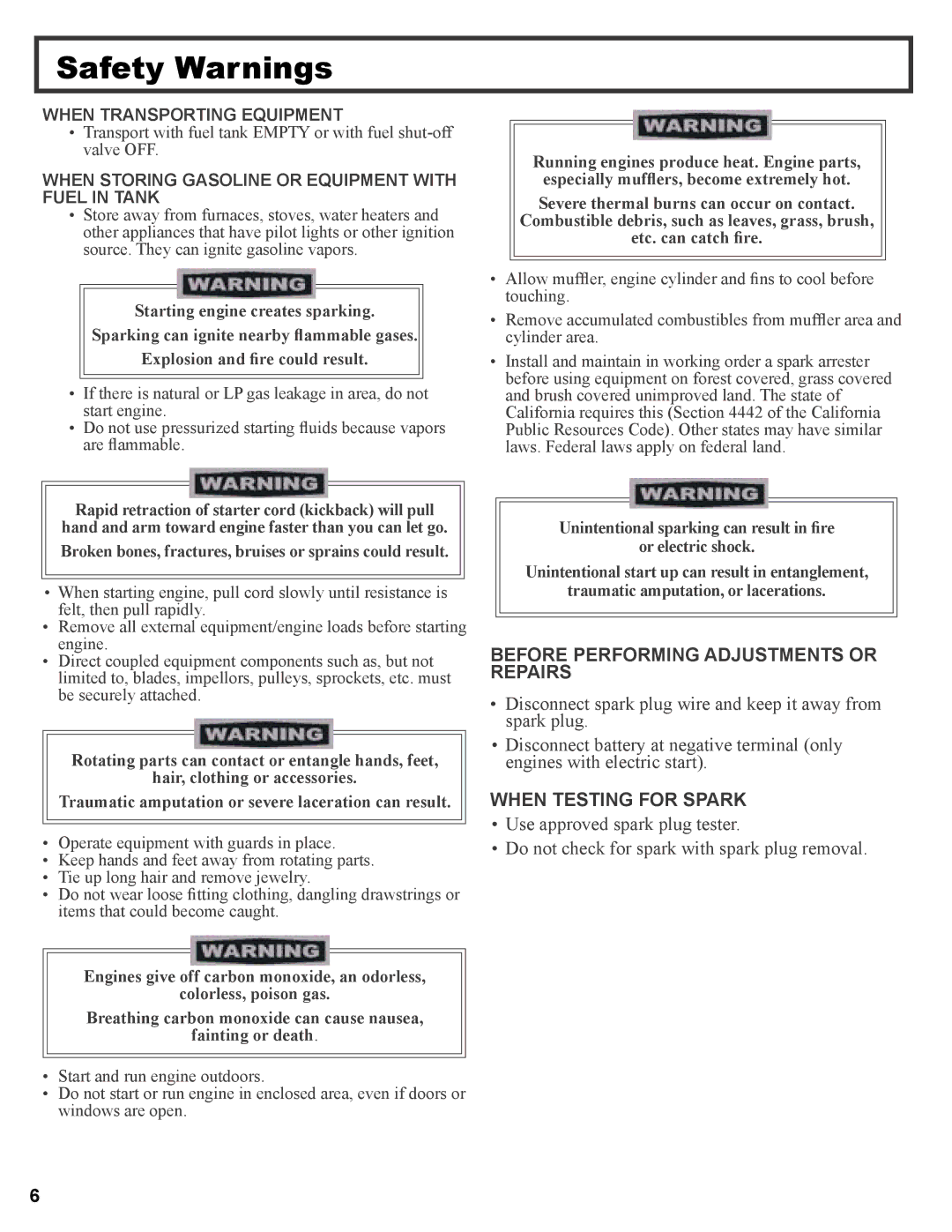
Safety Warnings
WHEN TRANSPORTING EQUIPMENT
• Transport with fuel tank EMPTY or with fuel
WHEN STORING GASOLINE OR EQUIPMENT WITH FUEL IN TANK
• Store away from furnaces, stoves, water heaters and other appliances that have pilot lights or other ignition source. They can ignite gasoline vapors.
Starting engine creates sparking.
Sparking can ignite nearby flammable gases.
Explosion and fire could result.
•If there is natural or LP gas leakage in area, do not start engine.
•Do not use pressurized starting fluids because vapors are flammable.
Running engines produce heat. Engine parts, especially mufflers, become extremely hot.
Severe thermal burns can occur on contact.
Combustible debris, such as leaves, grass, brush,
etc. can catch fire.
•Allow muffler, engine cylinder and fins to cool before touching.
•Remove accumulated combustibles from muffler area and cylinder area.
•Install and maintain in working order a spark arrester before using equipment on forest covered, grass covered and brush covered unimproved land. The state of California requires this (Section 4442 of the California Public Resources Code). Other states may have similar laws. Federal laws apply on federal land.
Rapid retraction of starter cord (kickback) will pull hand and arm toward engine faster than you can let go.
Broken bones, fractures, bruises or sprains could result.
•When starting engine, pull cord slowly until resistance is felt, then pull rapidly.
•Remove all external equipment/engine loads before starting engine.
•Direct coupled equipment components such as, but not limited to, blades, impellors, pulleys, sprockets, etc. must be securely attached.
Rotating parts can contact or entangle hands, feet,
hair, clothing or accessories.
Traumatic amputation or severe laceration can result.
•Operate equipment with guards in place.
•Keep hands and feet away from rotating parts.
•Tie up long hair and remove jewelry.
•Do not wear loose fitting clothing, dangling drawstrings or items that could become caught.
Unintentional sparking can result in fire
or electric shock.
Unintentional start up can result in entanglement,
traumatic amputation, or lacerations.
BEFORE PERFORMING ADJUSTMENTS OR REPAIRS
•Disconnect spark plug wire and keep it away from spark plug.
•Disconnect battery at negative terminal (only engines with electric start).
WHEN TESTING FOR SPARK
•Use approved spark plug tester.
•Do not check for spark with spark plug removal.
Engines give off carbon monoxide, an odorless,
colorless, poison gas.
Breathing carbon monoxide can cause nausea,
fainting or death.
•Start and run engine outdoors.
•Do not start or run engine in enclosed area, even if doors or windows are open.
6
